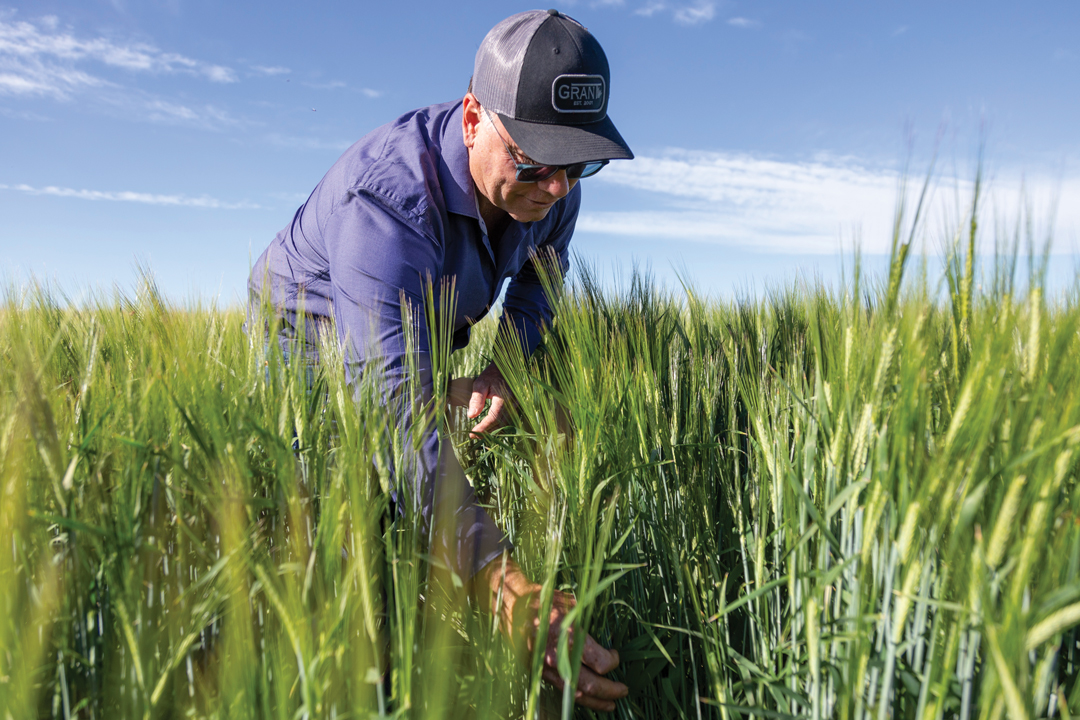A TRADE UPGRADE
BY JONATHAN DRIEDGER
Markets have existed for as long as humans have engaged in trade—two individuals come together to exchange goods or to provide one product and receive money in return. While this basic premise remains in place in the grain industry today, methods have changed and continue to do so at an ever-increasing pace. Technology has worked its way into every aspect of grain marketing and many of these advances work to the benefit of the farmer.
What is the role of technology in markets? Technology is not a means unto itself—it is only useful if it facilitates something that already needs to happen. From a market perspective, we can look at the transaction itself and the information that leads to it.
An exchange of goods requires one party to have something another party wants and, together, they agree upon a price to complete the transaction. For example, a farmer communicates with a grain buyer and an agreement is made to deliver a quantity and quality of grain under specific terms. In return, the farmer will receive payment. In the past, a trip to the local elevator or phone call would be required. Much physical grain still changes hands this way, but that is starting to change.
Futures markets have progressed from noisy open outcry pits, where grown men wore brightly coloured jackets, shouted and flashed hand gestures, to today’s online forums. Similarly, cash grain trading is moving in this direction. The evolution has been slower than in futures markets, but is gradually moving forward. Online cash market exchanges such as AgExchange, FarmLead, Grain Discovery and others are electronically connecting buyers and sellers. The volumes are still quite small, but momentum will pick up and the use of these platforms will become increasingly common.
There are potential benefits to increased online cash transactions. Farmers can quickly and easily shop their grain to a wider network of buyers, increasing competition and, potentially, prices. Any increased transparency in the bids, offers and transactions that take place in this forum would provide a great benefit to farmers. This may also be achieved through traditional cash brokers, but might be amplified when done online.
While the role of technology in facilitating transactions aids in the speed and efficiency of grain trading, the real benefit of technology is through the dissemination of information. Information is the oxygen for a well-functioning market—a lack of information could mean markets start to suffocate. Widespread and transparent information allows buyers and sellers to make informed decisions and flattens mountains, which levels the playing field, and this is where farmers have particularly benefitted.
Greater access to data and news allows farmers to make better informed decisions about when, where and how to sell their grain. It is difficult to discern what is actually important when being bombarded by a great deal of “noise,” however, the ability to source more information is an advantage.
It’s not just the amount of information that matters, but also who has which information and when. Consider how technology has opened a spigot of instant information to the public. Two decades ago, corporations had an enormous information advantage relative to farmers in information access such as international crop conditions, prices offered on global public tenders and export statistics. Most of this information would only trickle down to farmers long after it had been priced into the market, if it reached them at all.
Today, a farmer in Red Deer will know whether it’s raining in Brazil or Ukraine as quickly as a trader in one of the global head offices. Large companies still maintain an advantage—there is important information that is not publicly available that is obtained through the process of conducting business—but the playing field has been levelled a great deal.
Marketing is the process of turning crops into cash, hopefully for the best price possible. The basic exercise is the same—a farmer makes a commitment to provide a specific commodity in exchange for an agreed upon value. However, the techniques and efficiencies of this process continue to improve, with many of these changes working to the relative advantage of the farmer.







Comments